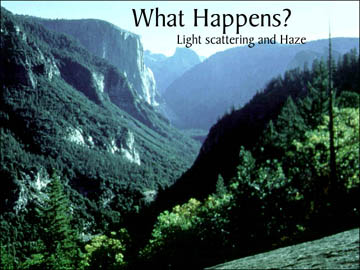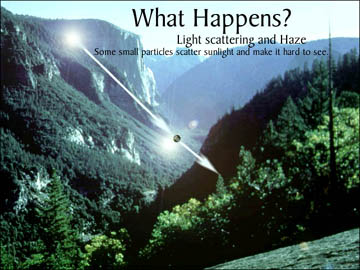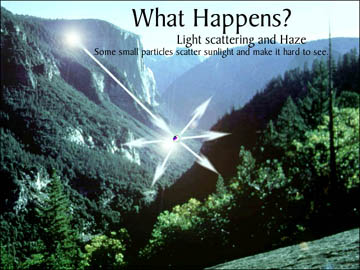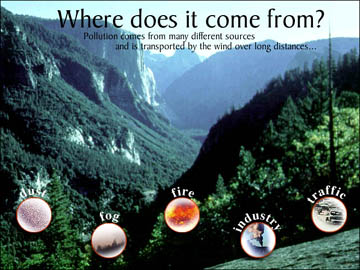Light Scattering and Absorption |
|

|
Light scattering and absorption is natural--the sky is blue because of the scattering effect of naturally-occurring gases. On a clear day the light from the sun falls on the mountain and the light reflects off of it directly reaching our eyes.
|

|
Tiny particles float between us and the
mountains.
Light reflects off the particles themselves and that light both reaches our eyes and is scattered away. |

|
When there is air pollution made up of particles, the sunlight reflecting off the mountains is scattered in all directions and much less of it reaches our eyes. This reduces clarity, color, texture, and form and can even completely obscure objects. |

|
Visibility or visual range can be seriously
reduced by polluting gases and fine particles called aerosols that absorb
or scatter light.
We don't see the mountains as clearly. Now we have to peer through a bright curtain of light that competes with and may overwhelm the original light from the scene. |

|
Visibility or visual range can be seriously
reduced by polluting gases and fine particles called aerosols that absorb
or scatter light.
Particles that scatter light: sulfates, nitrates, VOCs, and dust Carbon or soot and the gas nitrogen dioxide absorb light. |
|
© 2006 SJVAPCD. All Rights Reserved. |